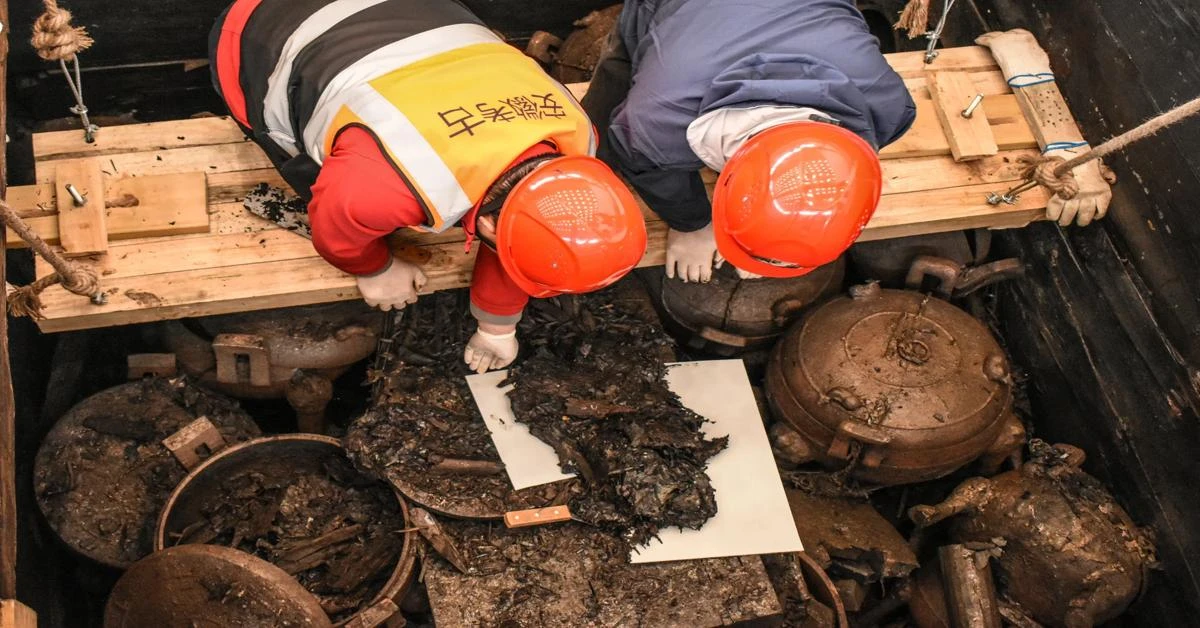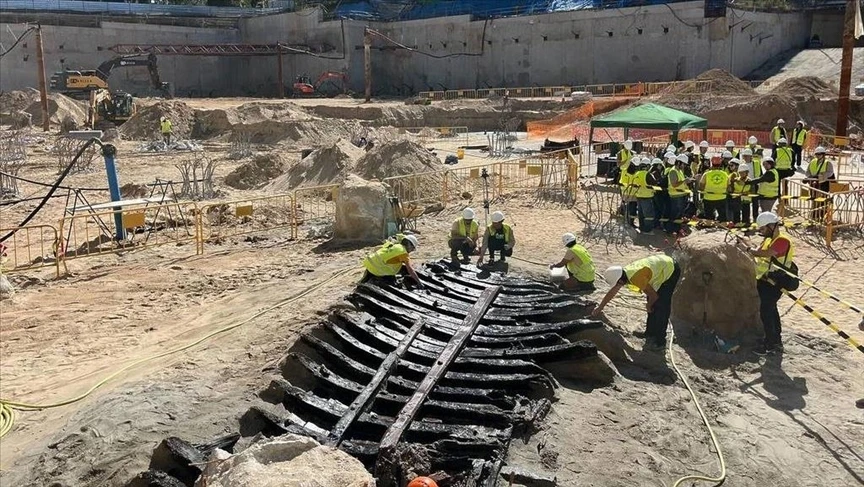Over 2,000 years old Chu state tomb excavated in Huainan, China

Excavation of the Wuwangdun tomb, potentially the burial site of King Kaolie, reveals intricate details about the Chu state’s culture and craftsmanship during the Warring States Period (475–221 B.C.E)
The archaeological world is buzzing with excitement as researchers delve into the depths of a 2,200-year-old tomb in Huainan, Anhui province, China.
Believed to be the resting place of King Kaolie, one of the last sovereigns of the ancient Chu state, the Wuwangdun tomb offers a window into the opulent past of one of the major players during the Warring States Period.
Recent excavations at the Wuwangdun site have unearthed a trove of over a thousand artifacts, including bronze ritual vessels, wooden figurines, and musical instruments.
These provide invaluable insights into the daily and ceremonial life of the Chu state. The artifacts show the sophistication and artistry of Chu culture, renowned for its lacquerwork and intricate craftsmanship.
The excavation team, led by Gong Xicheng of the Anhui Provincial Institute of Cultural Relics and Archaeology, has highlighted the site’s significance due to its size and the quality of the finds.
“This is the largest and highest-level Chu state tomb we have excavated to date,” Gong stated, pointing out the complex structure of the main tomb, which is surrounded by smaller burial sites and sacrificial areas.
A notable aspect of the site is its innovative preservation efforts. Zhang Zhiguo of the National Center for Archaeology shared insights into the technical methods used to protect and extract ancient bamboo mats, which are crucial for understanding the tomb’s architectural and historical context. “We are conducting the largest-scale ancient bamboo mat extraction project worldwide,” Zhang revealed, indicating the global significance of the find.
The Wuwangdun tomb, located approximately 15 kilometers (9.32 miles) from Shouchun – once the capital of Chu – has been at the center of archaeological and historical studies aiming to clarify the lineage and legacy of the Chu rulers. The ongoing research and excavation are expected to resolve long-standing questions about the tomb’s primary occupant, potentially confirming it as King Kaolie’s final resting place.
Plans are underway to enhance the visitor experience at the site. The local government of Huainan proposes creating an archaeological park to showcase these remarkable discoveries more effectively.
As excavations continue, researchers hope that further findings will offer more clues about the enigmatic Chu state at the dawn of imperial China. The Wuwangdun tomb’s historical significance is undeniable, providing scholars and the public alike with a rare glimpse into the pre-imperial era that shaped much of East Asian history.
Source: Newsroom



